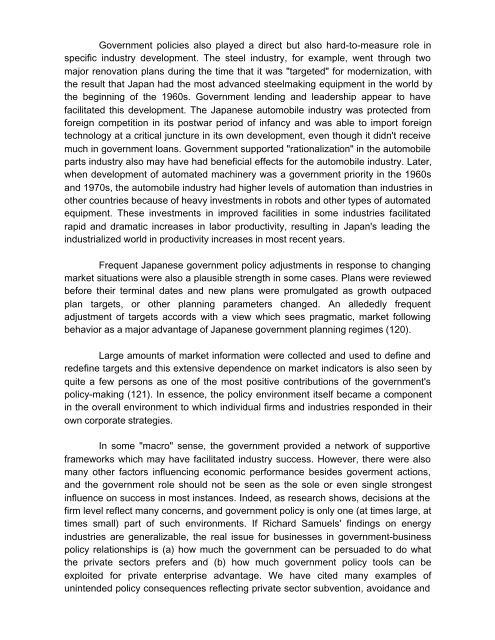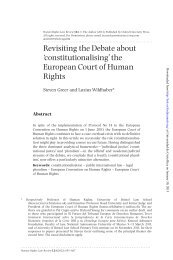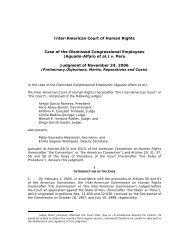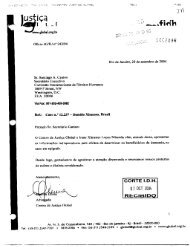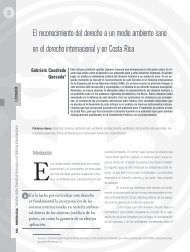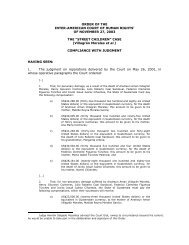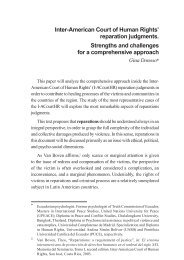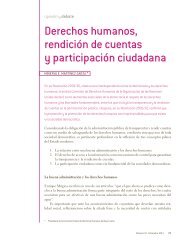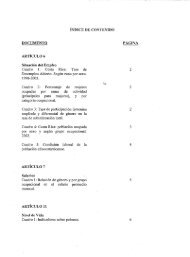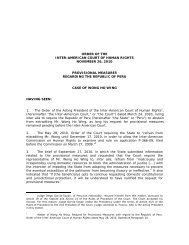The Political Economy of Japan Bradley M. RICHARDSON
The Political Economy of Japan Bradley M. RICHARDSON
The Political Economy of Japan Bradley M. RICHARDSON
- No tags were found...
Create successful ePaper yourself
Turn your PDF publications into a flip-book with our unique Google optimized e-Paper software.
Government policies also played a direct but also hard-to-measure role inspecific industry development. <strong>The</strong> steel industry, for example, went through twomajor renovation plans during the time that it was "targeted" for modernization, withthe result that <strong>Japan</strong> had the most advanced steelmaking equipment in the world bythe beginning <strong>of</strong> the 1960s. Government lending and leadership appear to havefacilitated this development. <strong>The</strong> <strong>Japan</strong>ese automobile industry was protected fromforeign competition in its postwar period <strong>of</strong> infancy and was able to import foreigntechnology at a critical juncture in its own development, even though it didn't receivemuch in government loans. Government supported "rationalization" in the automobileparts industry also may have had beneficial effects for the automobile industry. Later,when development <strong>of</strong> automated machinery was a government priority in the 1960sand 1970s, the automobile industry had higher levels <strong>of</strong> automation than industries inother countries because <strong>of</strong> heavy investments in robots and other types <strong>of</strong> automatedequipment. <strong>The</strong>se investments in improved facilities in some industries facilitatedrapid and dramatic increases in labor productivity, resulting in <strong>Japan</strong>'s leading theindustrialized world in productivity increases in most recent years.Frequent <strong>Japan</strong>ese government policy adjustments in response to changingmarket situations were also a plausible strength in some cases. Plans were reviewedbefore their terminal dates and new plans were promulgated as growth outpacedplan targets, or other planning parameters changed. An allededly frequentadjustment <strong>of</strong> targets accords with a view which sees pragmatic, market followingbehavior as a major advantage <strong>of</strong> <strong>Japan</strong>ese government planning regimes (120).Large amounts <strong>of</strong> market information were collected and used to define andredefine targets and this extensive dependence on market indicators is also seen byquite a few persons as one <strong>of</strong> the most positive contributions <strong>of</strong> the government'spolicy-making (121). In essence, the policy environment itself became a componentin the overall environment to which individual firms and industries responded in theirown corporate strategies.In some "macro" sense, the government provided a network <strong>of</strong> supportiveframeworks which may have facilitated industry success. However, there were alsomany other factors influencing economic performance besides goverment actions,and the government role should not be seen as the sole or even single strongestinfluence on success in most instances. Indeed, as research shows, decisions at thefirm level reflect many concerns, and government policy is only one (at times large, attimes small) part <strong>of</strong> such environments. If Richard Samuels' findings on energyindustries are generalizable, the real issue for businesses in government-businesspolicy relationships is (a) how much the government can be persuaded to do whatthe private sectors prefers and (b) how much government policy tools can beexploited for private enterprise advantage. We have cited many examples <strong>of</strong>unintended policy consequences reflecting private sector subvention, avoidance and


